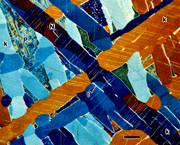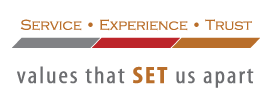 Color has historically seen limited use in metallography, mainly due to the cost of film and prints and the difficulty and cost of reproducing images in publications. However, with the growth of digital imaging, capturing color images is much simpler and cheaper. Also, printing images in color is inexpensive for in-house reports, and can be distributed cheaply on CDs, although reproduction in journals is still expensive. Color does have many advantages over black and white. First, the human eye is sensitive to only about forty shades of gray from white to black, but is sensitive to a vast number of colors. Tint etchants reveal features in the microstructure that often cannot be revealed using standard black and white etchants. Color etchants are sensitive to crystallographic orientation and can reveal if the grains have a random or a preferred crystallographic texture. They are also very sensitive to variations in composition and residual deformation. Further, they are usually selective to certain phases and this is valuable in quantitative microscopy. By George Vander Voort
Color has historically seen limited use in metallography, mainly due to the cost of film and prints and the difficulty and cost of reproducing images in publications. However, with the growth of digital imaging, capturing color images is much simpler and cheaper. Also, printing images in color is inexpensive for in-house reports, and can be distributed cheaply on CDs, although reproduction in journals is still expensive. Color does have many advantages over black and white. First, the human eye is sensitive to only about forty shades of gray from white to black, but is sensitive to a vast number of colors. Tint etchants reveal features in the microstructure that often cannot be revealed using standard black and white etchants. Color etchants are sensitive to crystallographic orientation and can reveal if the grains have a random or a preferred crystallographic texture. They are also very sensitive to variations in composition and residual deformation. Further, they are usually selective to certain phases and this is valuable in quantitative microscopy. By George Vander Voort
(Courtesy of the Microscopy Society of America – www.microscopy.org) – Original Published by Microscopy Today, November 2005 – Volume 13, Number 6 – www.microscopy-today.com
